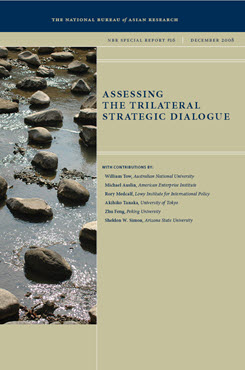Shaping a Pacific Future
Washington's Goal for the Trilateral Strategic Dialogue
This essay discusses the history and prospects of the U.S.-Japan-Australia Trilateral Strategic Dialogue (TSD), particularly in the context of the U.S.-Japan alliance.
EXECUTIVE SUMMARY
This essay discusses the history and prospects of the U.S.-Japan-Australia Trilateral Strategic Dialogue (TSD), particularly in the context of the U.S.-Japan alliance.
MAIN ARGUMENT
In response to changes in the Asia-Pacific region, including the rise of China and nontraditional security threats, U.S. strategic thinking has begun to look beyond the traditional hub-and-spoke model of post-war U.S. alliances. Washington has joined Canberra and Tokyo in a dialogue designed to focus their bilateral relationships on joint regional concerns. Initiated in 2005, the TSD agenda has remained focused on more narrowly defined security concerns, including maritime security, nonproliferation mechanisms, counterterrorism, and missile defense. At a minimum, the U.S. is pushing for the enhancement of information exchange on these issues as well as for sharing strategic assessments with Japan and Australia in order to have similar regional pictures. Engaging Japan in TSD discussions over common threats and common responses can serve to help further refine the goal of globalizing the U.S.-Japan alliance, as seen in TSD-initiated joint military exercises held among the three countries.
POLICY IMPLICATIONS
- The TSD process will succeed only with the highest political support; therefore, the governments should maintain the TSD at the ministerial level while expanding the number of necessary working groups.
- Creating greater trust among the three participants in shared goals is crucial to the process. This can be achieved by structuring regular TSD-unique exercises in crisis scenarios, the sharing of ISR (intelligence, surveillance, and reconnaissance) maritime security, ballistic missile defense (BMD), and humanitarian relief.
- Eventually, the TSD can give the partners confidence to begin jointly discussing cooperation on major security issues. During this process, therefore, the three governments should push forward on achieving complementarity in BMD systems and ISR capabilities but also focus more on maritime security, especially antisubmarine warfare, which is of vital concern in the Asia-Pacific region.


